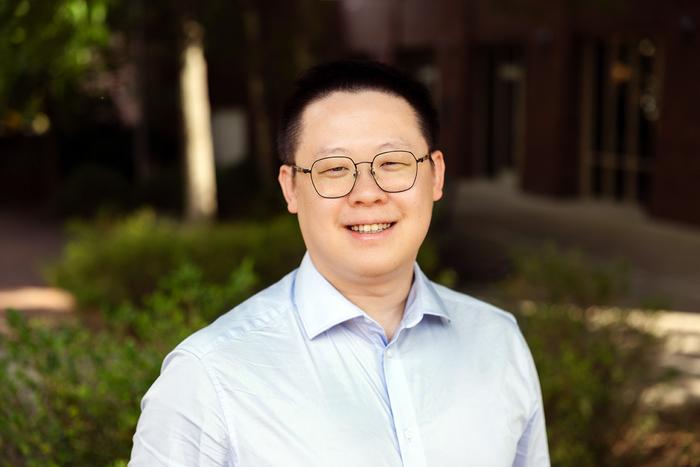Revolutionizing Space Propulsion: The Pioneering Work of Chen Cui
In the vast expanse of space, where every ounce of fuel matters, the pursuit of efficient propulsion systems stands as a cornerstone of modern aerospace engineering. Dr. Chen Cui, a rising star in the Department of Mechanical and Aerospace Engineering at the University of Virginia (UVA), has embarked on a groundbreaking journey to advance electric propulsion technologies critical for future space missions. Known for their ability to offer enhanced fuel efficiency and operational longevity, electric propulsion systems are fast becoming indispensable to ambitious space exploration initiatives.
Electric propulsion (EP) systems function by ionizing neutral gases, mainly xenon, and harnessing electric fields to propel ions into a high-speed plasma beam. This method drastically reduces the fuel requirements compared to traditional chemical rockets, allowing spacecraft to traverse greater distances while carrying less propellant. Dr. Cui’s research centers around optimizing electric propulsion thrusters, which are vital for missions planned by organizations like NASA, aimed at deep space exploration, lunar returns, and eventual human settlements on Mars.
As Dr. Cui states, the optimization of electric propulsion integration with spacecraft systems is crucial for the success of long-duration space missions. With a thorough grasp of plasma physics and computational modeling, Cui delves into the intricacies of electron behavior within plasma beams, aiming to enhance the performance and reliability of EP systems. By collaborating with eminent colleagues, including his former advisor Joseph Wang from the University of Southern California, Cui’s research leads to vital insights that could shape the trajectory of future aerospace engineering.
Cui’s focus extends beyond mere performance enhancements; he aims to elucidate how microscopic interactions within electric propulsion systems affect their macroscopic dynamics. A recent publication in the esteemed journal Plasma Sources Science and Technology sheds light on the complexities of electron kinetic behavior in EP thrusters. These findings are poised to pave the way for improved designs and operational methodologies in space engineering.
Electric propulsion systems are not merely tools for thrust generation; they are intricate assemblies where every component interacts with the plasma plume. In Dr. Cui’s research, the plume emitted by the thrusters is recognized as the system’s lifeblood, necessitating a thorough understanding to mitigate potential issues. One significant concern arises from the possibility of backflow, where particles might return toward the spacecraft, jeopardizing critical systems such as solar panels and communication devices.
The ramifications of this research extend beyond academic conjecture; they hold implications for the design and engineering of spacecraft intended for extended missions, such as those outlined in NASA’s Artemis Program. As we aim to venture further into the cosmos, Dr. Cui emphasizes that ensuring the reliability and stability of electric propulsion technologies is paramount. The need for a deeper understanding of plasma plume behavior is not just a theoretical exercise; it is a practical necessity for the success of humanity’s next giant leap.
To explore the forefront of this field, Cui employs advanced computational simulations powered by cutting-edge supercomputers. His methodology harnesses a technique known as Vlasov simulation, which allows for noise-free analysis of electron dynamics within plasma flows. This represents a notable advancement over traditional modeling techniques, permitting researchers to factor out extraneous data and focus on the intricate details shaping electron interactions.
Dr. Cui’s work embodies the intersection of theoretical knowledge and practical application, crucial for progress in aerospace engineering. By investigating the detailed energy transfer methods within the EP systems, he sheds light on pivotal dynamics that previous models have overlooked. These insights not only sharpen our understanding of plasma physics but also create the groundwork for the development of more sophisticated propulsion technologies.
As we look toward the horizon of space exploration, Dr. Cui’s research offers hope and direction in our quest for sustainable interstellar travel. The ability to improve electric propulsion systems will undoubtedly influence our capacity to launch more ambitious missions, reduce costs, and minimize reliance on Earth’s finite resources. With the prospect of future human colonies on Mars and beyond, the significance of such innovations cannot be overstated.
In conclusion, Chen Cui’s pioneering work in electric propulsion is more than an academic endeavor; it is an essential part of realizing the future of space exploration. His commitment to understanding the underlying principles of plasma behavior and electron dynamics places him at the forefront of a field that promises to transform how we approach interplanetary travels. As the exploration of deeper space beckons, innovations in electric propulsion may well define the next chapter of human history, enabling us to see beyond the confines of our planet.
Subject of Research: Electric Propulsion Systems
Article Title: Vlasov Simulations of Electric Propulsion Beam
News Publication Date: October 2023
Web References: Journal Link
References: Plasma Sources Science and Technology, DOI: 10.1088/1361-6595/ad98c0
Image Credits: Credit: UVA Engineering
Keywords
Electric propulsion, plasma dynamics, spacecraft engineering, Chen Cui, space exploration, Vlasov simulation, Mars missions, NASA Artemis Program.





